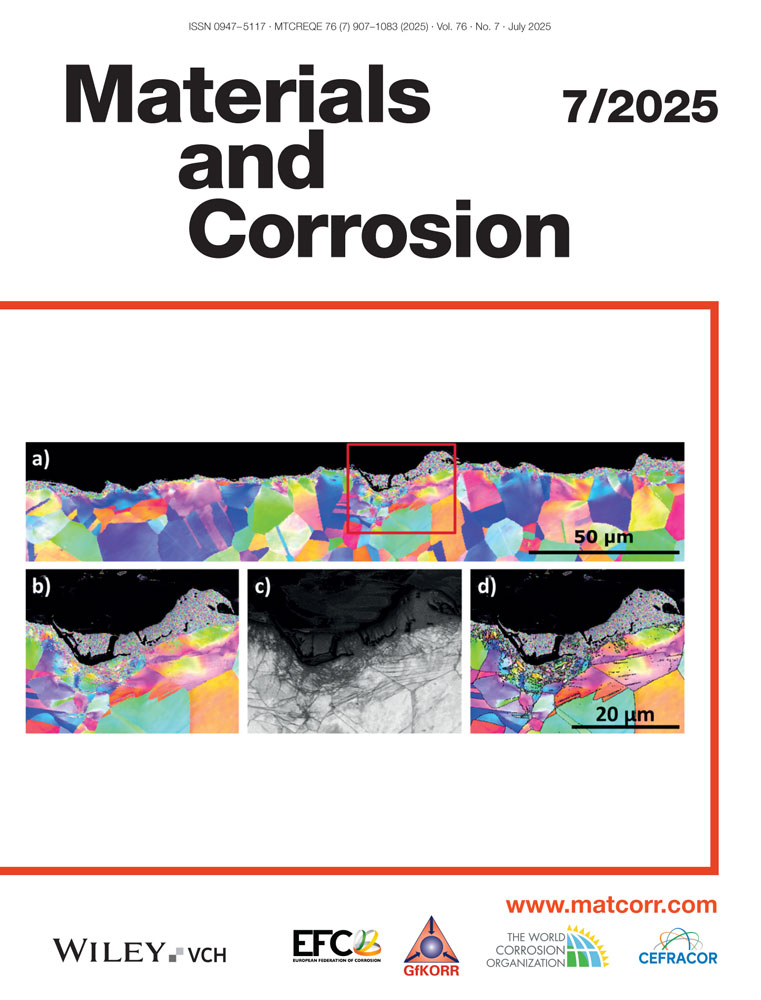Electrochemical impedance spectroscopy study of surface films formed on copper in aqueous environments
Abstract
The electrochemical behavior of pure copper has been studied in aqueous environments using linear polarization and electrochemical impedance spectroscopy (EIS) techniques as a function of immersion time. The effect of pollutants (like chloride, sulfide and ammonium ions) on the nature of films formed on the copper surface has been studied. All the surfaces revealed the presence of a porous oxide layer. The corrosion resistance decreased with increasing amount of chloride ions. The addition of Na2S in the environments in the absence of any chloride species was beneficial for corrosion resistance. EIS data suggested that the capacitance of the films formed in chloride environments was higher. The surfaces obtained in presence of chloride ions were relatively rough and deeply attacked. The total impedance decreased after 432 h of immersion in solutions possessing chloride ions. The damaging role of chloride ions and the relatively less severe effect of sulfide ions were noted.




